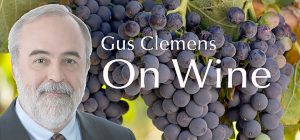Buying wine can be intimidating. How do you know if the wine is any good without buying a bottle and tasting it? Wine critics may help, but not all wines have a current score and you may find descriptors are just gobbledygook.
Several wine-producing countries have labeling systems to give consumers some insight into quality. Italy introduced its Denominazione di Origine Controllata (DOC) in 1963 to give guidance.
Italy’s system now has four categories. The first two indicate the geographic location where the wine was produced rather than indicating quality. Vino da Tavola (VdT)—“Table Wine”—indicates the fruit did not come from a specific region. Geografica Tipica (IGT)—“Indication of Geographical Typicality”—identifies wines produced in a specific region.
Two designations are intended to signify quality. Denominazione di Origine Controllata (DOC)—“Controlled Designation of Origin”—is the second-highest quality standard. It can be attributed to almost every style of Italian wine, but winemakers must follow strict guidelines ranging from zoning laws to permitted varieties. There are more than 300 distinct DOCs in Italy, each with its own regulations.

Denominazione di Origine Controllata e Garantita (DOCG) is the highest Italian wine standard. It translates as “Controlled and Guaranteed Designation of Origin.” Italy adopted DOCG in 1980 after complaints that too many DOC wines had variable quality. To earn DOCG status, the wine must undergo taste tests conducted by a government-sponsored and approved committee. There are just 74 DOCGs.
Both DOC and DOCG exist in an additional classification: Denominazione d’Origine Protetta (DOP)—“Protected Designation of Origin.” These require specific production methods and quality standards. DOP does not apply only to wine but to many Italian foods—cheese, olive oil, prosciutto, tomatoes, and more.
Finally, while DOCG and DOC indicate quality, there are DOC wines made with rules more strict than DOCG wines. So, some DOC wines can be higher in quality than some DOCG wines. Wine is not simple. Italian classifications assist, but you still have to buy the wine and taste it.
Tasting notes:
• Parmoleto Montecucco Sangiovese Riserva DOCG 2016: Rich, tart expression of sangiovese. Plenty of tasty, assertive red fruit. $19-25 Link to my review
• Vietti Nebbiolo Perbacco, Langhe DOC 2018: Vibrant and relaxed at the same time. Superb, serious wine at this price point. $22-25 Link to my review
• Banfi Rosa Regale Asti Sparkling White Wine DOCG 2020: Honey-sweet with some crispness and moscato affability. Excellent for summer fun. $23 Link to my review
Last round: It is so hot, my crayons are now watercolors. Wine time.

